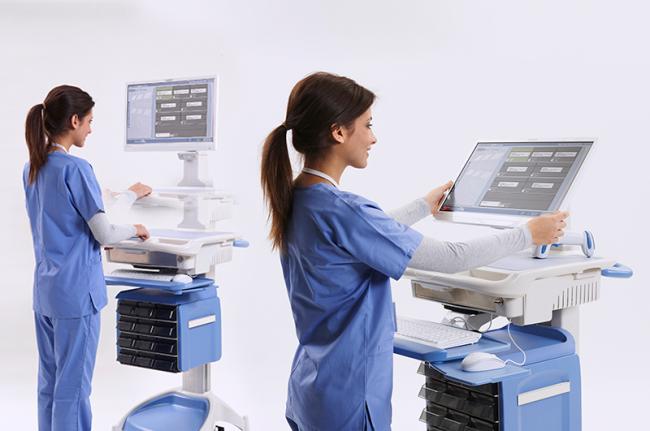Don’t Let Poor Medical Cart Ergonomics Distract From Providing Great Patient Care
Technology has improved the processes of healthcare facilities. Even so, medical equipment manufacturers continuously engage in new methods to further enhance workflow efficiency. Like any other piece of equipment, medical carts are far from perfect. Various customization options might help make each cart suitable for your facility's needs, but it should still end up comfortable with great ergonomics to take care of your staff. Cornell University released a checklist that states 35 points every medical cart should comply with before being described as ergonomic. The list also takes into consideration the usability, safety, and efficiency of the cart.
Protecting Medical Records
All departments in a medical facility utilize record-keeping to track a patient's status and information. Nurses and pharmacists spend an average of three hours a day typing in data and updating necessary records. Poor medical cart ergonomics make this task tedious and uncomfortable for staff. Before investing in a medical cart of your choice, consider the following:
- Adjustable Monitor - You should be able to maneuver the monitor to eye level. That includes tilting, swiveling, rotating, raising, and lowering the display. The monitor should be large enough for you to read the information. A medical cart that allows you to change monitors is also acceptable.
- Footrest - When nurses or doctors need to be seated for more extended periods, it's easy to get fatigued. A built-in footrest keeps your staff comfortable and ensures an ergonomic seating position.
- Adjustable Keyboard Tray - Similar to the monitor, the keyboard tray should also be movable. Doing so prevents discomfort and fatigue from typing. The keyboard tray should be able to tilt, rotate, and height adjusted for maximum configuration.
- Cart Height Adjustment - A medical cart should have the ability to alter its elevation to cater to nurses of different sizes. The height should be adjustable while still being able to withstand the weight of the rest of the equipment.
- Accessory Compartments - In most cases, a medical cart might need additional compartments to cater to every hospital staff's workflow. These include, but are not limited to: storage basket, chart holder, signature pad, barcode scanners, sharps container, and medicine compartments.
Effortless Mobility
Another reason hospitals and other healthcare facilities switch to medical carts is mobility. With added medicine compartments, the carrier can turn into a mobile medicine dispenser. Since nurses will maneuver the cart, it needs to be lightweight to wheel around. Poor design in terms of mobility will lead to back problems and might cause injuries. Moreover, a lightweight and movable medical cart does not take up too much space in the facility and can easily be stored when not in use.
A cart that is easy to maneuver requires sturdy wheels that glide smoothly. The wheels should be strong enough to support the weight of the cart, along with any additional equipment and accessories. Locking wheels are a must in a healthcare facility to prevent any accidents from occurring.
High-Security Storage Solutions
Hospital staff are always bringing confidential patient information as well as prescription drugs. Therefore, their medical carts should also include safe storage with security measures. Optional medicine compartments have individual locking bins and containers to keep all medication untampered. Unlocking options include a key, barcode, or fingerprint. These security features also ensure that only authorized personnel can access the medicine and patient information.
Reliable Battery
Like any technological equipment, a medical cart's battery needs charging when they run out of power. A workstation's battery can last without a charge, depending on the type you choose. Using the medical cart's battery without plugging it into a power outlet will give an average of 13 hours of usage, which is more than a shift of work. Charging should only require 2-3 hours so staff can have more time to assist their patients.
Conclusion
Implementing proper ergonomics on medical carts provides the ultimate comfort for nurses. With that, they can be more efficient in providing the best quality healthcare to their patients.
At TouchPoint Medical, we aim to change the medical industry one medical cart at a time. Visit our product catalog to see the various models of medical carts available. You can also contact us directly and request a free demo.



